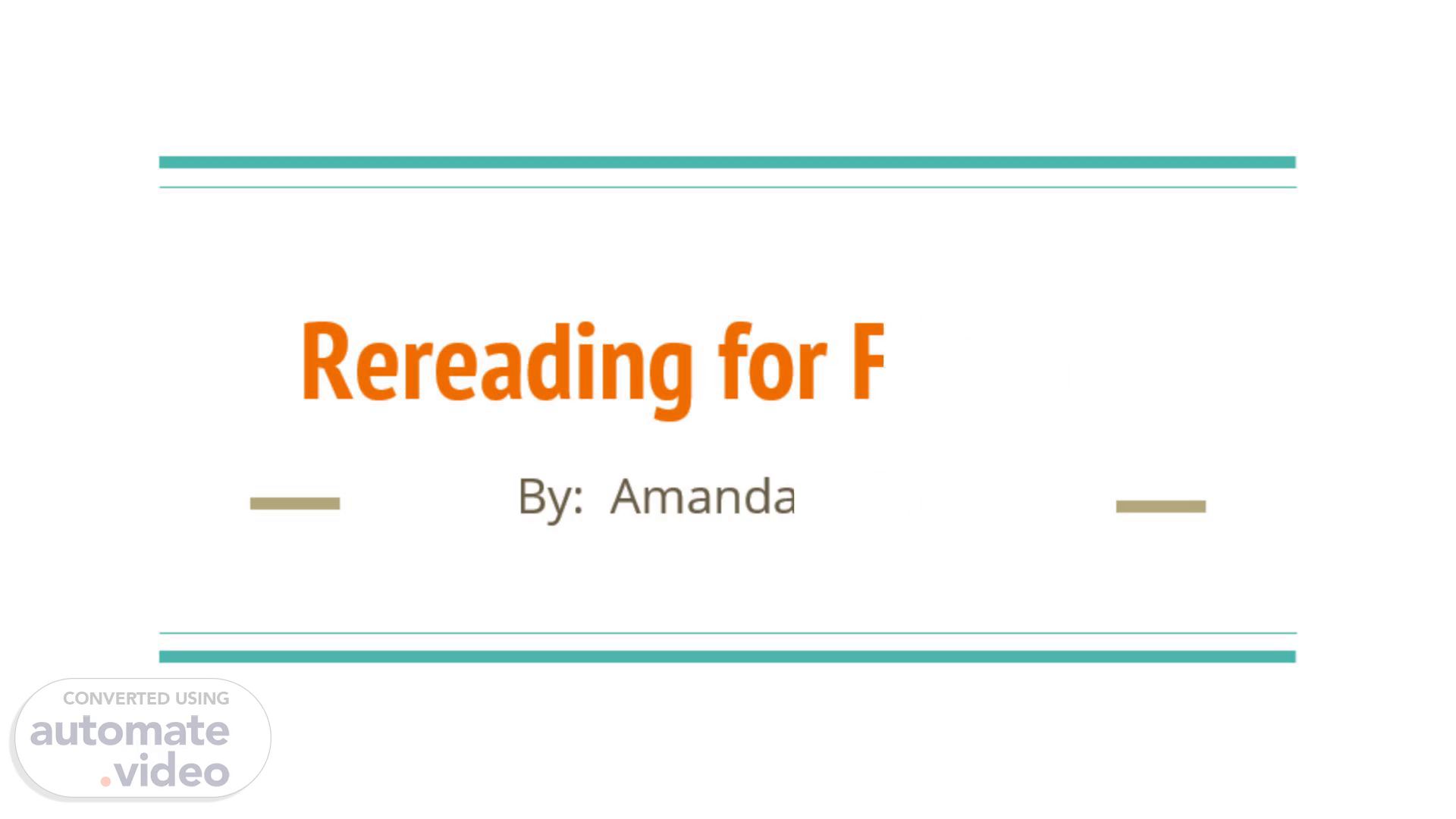
Rereading for Fluency
Scene 1 (0s)
Rereading for Fluency. By: Amanda Alder.
Scene 2 (6s)
Problem Statement. There are many struggling readers that struggle to adequately read grade level text with accuracy, rate, and prosody. Since the students struggle to read fluently they struggle to read content and comprehension. I studied the strategy of rereading passages to build fluency..
Scene 3 (22s)
Research Question. How does rereading passages affect students’ fluency?.
Scene 4 (29s)
Product Type. The product type that was used for the research capstone project was quantitative research because there was verifiable data..
Scene 5 (39s)
Data Collection and Analysis Methods. Intervention was done with six students for two weeks each day. The students reread passages to practice increasing their speed. Data of the students words per minute were collected each day to see the students’ progress on rereading. Data was also collected on the students progress of cold reads prior and after the two week interventions..
Scene 6 (57s)
Methodology. The method that was used to monitor the students progress was using the Dibels passages each day to monitor students’ words per minute. The data was collected on Dibels tracking sheet..
Scene 7 (1m 10s)
Riding the Bus to School. [image] "Riding the Bus to School" 120 — Student 1 — Student 2 WPM per Day — Student 3 — Student 4 Student 5 St'Aent 6.
Scene 8 (1m 20s)
Result and Conclusions of Table 1. All of the six students increased their words per minute by at least thirty minutes. One student increased their words per minute to sixty nine..
Scene 9 (1m 32s)
Twins. [image] —student "Twins" WPM per Day — Student 3.
Scene 10 (1m 39s)
Results and Conclusions of Table 2. All of the students increased their speed to over a hundred words per minute. Student number four increased the least with twenty four words per minute and student number three increased their words per minute to forty seven..
Scene 11 (1m 53s)
Cold Read WPM Comparison. [image] Net "Cold Read" WPM Comparison 120 Student Stuff ent 2 Stu&nt 3 Student Initial Read Final Read Student S.
Scene 12 (2m 2s)
Findings from Figure 3.. The comparison shows that all but one student increased their words per minute after the two weeks of rereading passages. Four out of the six students had considerable growth on cold reads..
Scene 13 (2m 16s)
Strengths and Weaknesses. The Dibels program was a great strength for the intervention research. The program has been around since the late seventies early eighties and was referred to in the material found for the literature review..
Scene 14 (2m 29s)
Influential Factors. The students wanted to increase the words per minute they read. The students became intrinsically motivated to beat their previous record of words per minute..
Scene 15 (2m 40s)
Areas for further investigation. The research only consisted of six students over a two week time frame. More research should be done with a larger sample group over a longer period of time..
Scene 16 (2m 52s)
Conclusion. The research supported the strategy of rereading to build students’ fluency. It will be a continual form of reading instruction in my classroom..